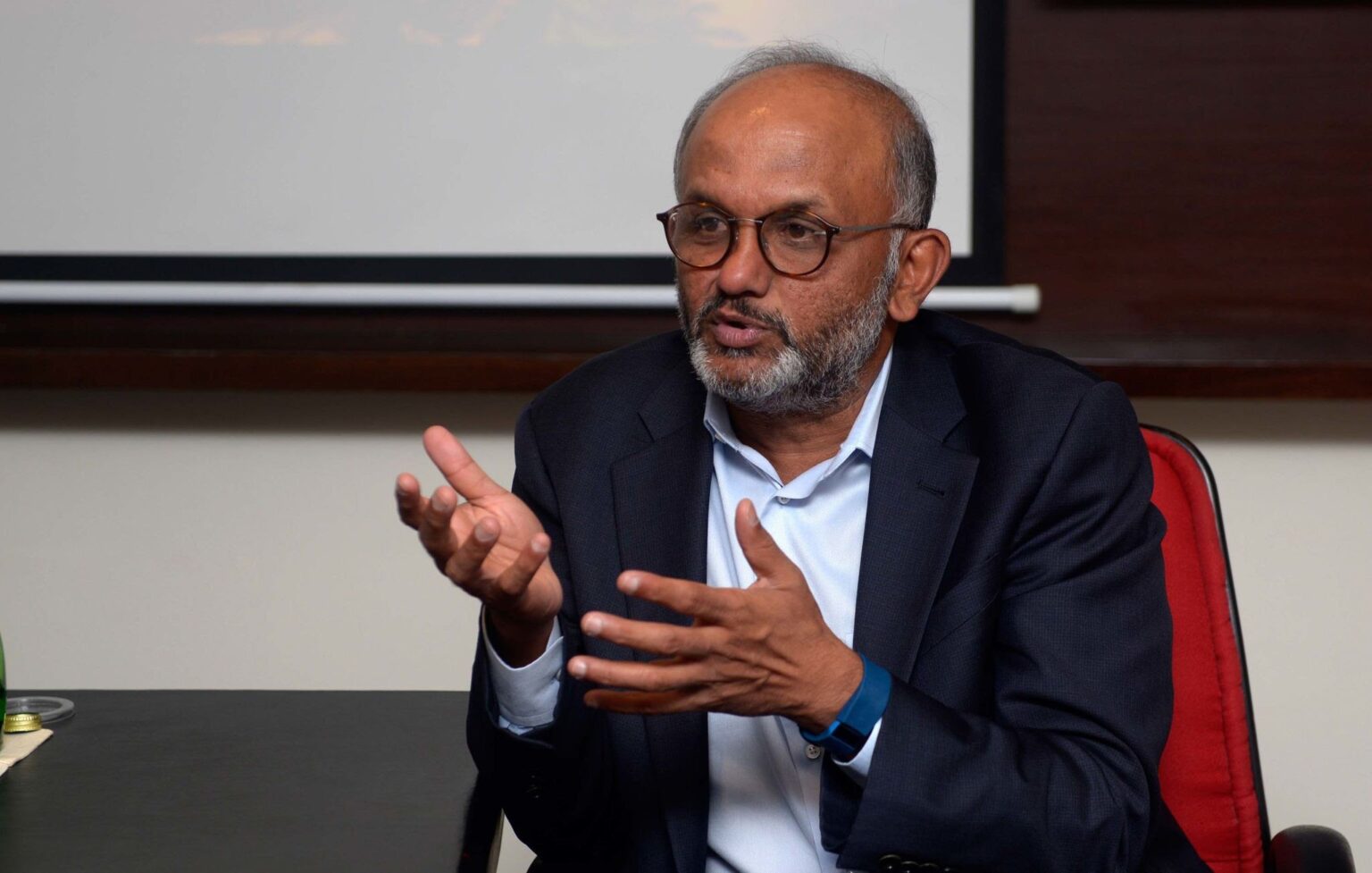In the story of global technology, certain leaders stand out not only for their business acumen but for their ability to see the world differently, to reimagine how people live, work, and create. Shantanu Narayen, the CEO of Adobe, is one such figure. Born in Hyderabad, India, into a modest middle-class household, Narayen charted a journey that would take him from the bylanes of a city steeped in culture to the boardrooms of Silicon Valley. Along the way, he reshaped Adobe from a company known for selling boxed software into a SaaS powerhouse that today defines the creative economy.
This is not merely the tale of a successful executive—it is the story of resilience, vision, and the quiet determination of an NRI who became one of the most admired CEOs in the world.
Childhood Roots: The Humble Foundations of a Dreamer
Shantanu Narayen was born in 1962 in Hyderabad, a city known for its heritage, food, and arts, but not then considered a hub of global technology. His father ran a small plastics company, and his mother taught American literature at a local college. It was a home where values mattered more than luxuries, and where every rupee was spent thoughtfully.
The Narayen family lived comfortably enough, but it was no palace. Education was viewed as the one passport to opportunity, and Shantanu’s parents instilled in him a curiosity about the world beyond their city. His mother’s love for literature exposed him to storytelling and communication, while his father’s entrepreneurial streak gave him an early look at risk, hustle, and accountability.
For young Shantanu, childhood meant balancing schoolwork with simple pleasures: cricket on dusty streets, long evenings with borrowed books, and helping his parents in small ways at home. It wasn’t privilege that defined him—it was discipline, patience, and the expectation that effort would eventually open doors.
Academic Strides: From Hyderabad to the United States
Shantanu excelled in school, developing an early love for engineering. He earned a bachelor’s degree in electronics and communications engineering from Osmania University in Hyderabad. But he knew that to push further, he had to look abroad, where advanced research, new ideas, and bold opportunities awaited.
He first headed to Bowling Green State University in Ohio for a master’s degree in computer science. The move was both exhilarating and daunting. Like many NRIs of his generation, Narayen grappled with culture shock—different accents, food, and weather that seemed alien compared to the heat of Hyderabad. Money was tight, so luxuries were rare. He focused on his studies, building friendships, and adapting to a world that demanded independence.
Later, he pursued an MBA from the Haas School of Business at the University of California, Berkeley. This dual training—deep technical expertise paired with managerial understanding—gave Narayen the rare ability to bridge two worlds: the rigor of engineering and the vision of business.
The Early Career: Lessons from Apple and Beyond
Armed with degrees and determination, Narayen stepped into the corporate world in the 1980s and 1990s, a time when Silicon Valley was beginning to take shape as the epicenter of technology. He began his career at Apple, where he worked on product development and learned firsthand how design, usability, and technology intersect.
Apple in those days was still building its identity. For Narayen, the lessons were profound: innovation wasn’t just about building better products—it was about creating experiences that resonated emotionally with users. His time at Apple sharpened his instinct for user-centric design, an approach that would later become central to Adobe’s transformation.
He also co-founded Pictra, a company focused on digital photo sharing—an idea far ahead of its time in the pre-social media era. While Pictra never became a giant, the experience gave Narayen entrepreneurial grit, teaching him the risks and realities of startups.
Joining Adobe: The Start of a Defining Chapter
In 1998, Narayen joined Adobe as Senior Vice President of Worldwide Product Development. Adobe was already known for its iconic tools like Photoshop, Illustrator, and Acrobat. But it was a company still rooted in the traditional model: selling boxed software on CDs through retail channels.
Narayen quickly rose through the ranks, becoming COO by 2005. In 2007, he was appointed CEO, succeeding Bruce Chizen. It was a pivotal moment. The world was changing fast: broadband internet was spreading, cloud computing was emerging, and customers no longer wanted to pay hefty sums for software updates every few years.
Narayen saw clearly that the future wasn’t in boxes—it was in the cloud. But convincing Wall Street, customers, and even Adobe’s employees to abandon the old model was no small feat.
Reinventing Adobe: From Boxed Software to SaaS Leader
The boldest decision of Narayen’s tenure was the shift from perpetual software licenses to a subscription model. Instead of buying Photoshop for hundreds of dollars, users could now subscribe to Adobe Creative Cloud for a modest monthly fee.
At first, the move was controversial. Investors worried about revenue drops, analysts doubted customer loyalty, and competitors mocked the idea. But Narayen remained resolute. He believed that democratizing access—making Adobe’s suite affordable to freelancers, students, and small businesses—would expand the market in ways that boxed software never could.
The gamble paid off. Within a decade, Adobe’s transformation was complete. Its revenues soared, its stock skyrocketed, and its customer base expanded globally. Today, Adobe Creative Cloud is used by millions of creators, from Hollywood studios to Instagram influencers.
Narayen didn’t just save Adobe; he redefined it. He turned it from a software vendor into a subscription-driven ecosystem at the heart of the digital economy.
Leadership Style: Empathy, Clarity, and Vision
Colleagues often describe Shantanu Narayen as calm, thoughtful, and deeply empathetic. He doesn’t lead with bluster or ego; he leads with clarity and purpose.
In interviews, he has stressed the importance of listening—listening to employees, to customers, to the subtle signals of an evolving market. He is also known for his humility, often crediting teams rather than taking personal credit for success.
One of his guiding philosophies is simple yet profound: “People don’t buy products; they buy solutions to their problems.” That belief has kept Adobe focused on user needs, not just technical specs.
Building a Global Brand: Adobe in the 21st Century
Under Narayen’s leadership, Adobe has gone beyond creative tools. The company now plays a major role in digital marketing, customer experience management, and artificial intelligence. Acquisitions like Omniture and Magento expanded Adobe’s reach, while investments in AI have made products like Photoshop smarter and more intuitive.
In 2023, Adobe announced Firefly, a generative AI toolset, signaling its intent to lead in the AI-driven creative revolution. Once again, Narayen was ahead of the curve, ensuring Adobe remains indispensable in a world where technology and creativity intersect.
Giving Back and Representing NRIs
Despite his global success, Narayen remains deeply connected to his Indian roots. He frequently speaks about the importance of education and mentors young entrepreneurs, both in the U.S. and India. He has also supported initiatives that expand access to digital literacy and creativity tools for underprivileged communities.
For the NRI community, Narayen is a role model: proof that one can begin in modest circumstances, cross borders, and still shape industries on a global scale.
Recognition and Global Influence
Shantanu Narayen has been consistently ranked among the world’s top CEOs. He has served on the boards of major organizations, including Pfizer and the U.S.-India Business Council. In 2016, former U.S. President Barack Obama appointed him to his management advisory board.
But beyond awards and titles, his legacy lies in how he steered Adobe through one of the most radical transformations in tech history. He proved that reinvention is possible—even for legacy companies—and that bold leadership rooted in empathy can create enduring value.
Lessons from Shantanu Narayen’s Journey
Narayen’s story offers timeless lessons for aspiring leaders and entrepreneurs:
- Constraints can sharpen creativity. Growing up in modest circumstances taught him resilience and problem-solving.
- Adaptability is everything. He bet on cloud subscriptions when many thought it was foolish, and turned it into Adobe’s greatest strength.
- Humility scales. By listening more and speaking less, Narayen earned the trust of employees, customers, and investors.
- Global vision, local roots. His ability to bridge India and the U.S. enriched his perspective and expanded his impact.
A Legacy Still Unfolding
Today, Shantanu Narayen stands as one of the longest-serving tech CEOs in Silicon Valley. He has not only built immense shareholder value but has also created a culture that empowers creativity across the globe. From students in small Indian towns to Hollywood filmmakers, Adobe’s tools enable millions to tell their stories—and Narayen has been the architect of that access.
For NRIs and the world at large, his journey is a reminder: beginnings don’t define endings. A child of Hyderabad who once studied by the dim light of scarcity now leads a company whose products illuminate the imagination of millions. His life is proof that leadership is not about where you start, but about the vision, humility, and courage with which you build.






